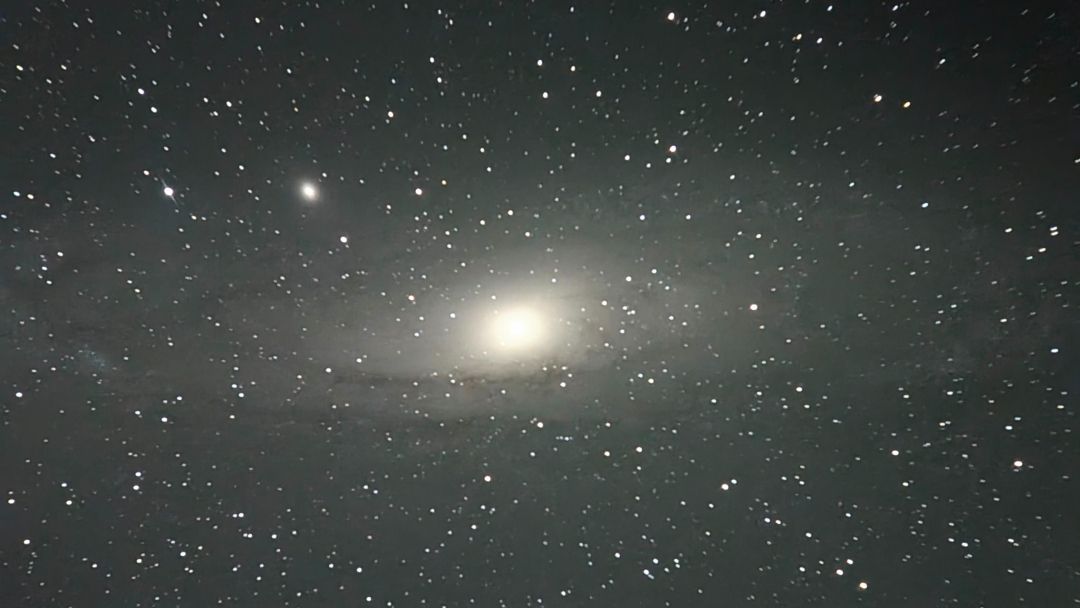Science
Discover the Andromeda Galaxy: A Guide for October Stargazers

Late October presents an exceptional opportunity for stargazers to witness the Andromeda Galaxy as it becomes increasingly visible in the night sky. This cosmic marvel, designated as M31, is the closest galaxy to the Milky Way, located approximately 2.5 million light-years from Earth in the constellation Andromeda. As the month progresses, Andromeda rises in the east at sunset, climbing high overhead by midnight and transitioning to the northwestern sky by dawn.
The Andromeda Galaxy boasts a remarkable diameter of 260,000 light-years and contains over a trillion stars. At its core lies a supermassive black hole, surrounded by stellar bodies that emit a warm, ancient glow. From a dark sky location, Andromeda can be spotted with the naked eye as a hazy oval blur. Utilizing a telescope or binoculars can enhance the experience, revealing the brighter light of its active core surrounded by a diffuse haze.
Locating the Andromeda Galaxy
To find the Andromeda Galaxy, observers can start by identifying the ‘M’ star formation in the constellation Cassiopeia, which appears prominently in the sky around midnight for viewers in the United States. The leftmost three stars in this formation create a pointer towards the Andromeda Galaxy, with the bright star Shedar at its tip guiding the way.
Astrophotographers have long cherished the Andromeda Galaxy, dedicating extensive time and effort to capturing its faint light and transforming it into stunning images. One notable example is by photographer Ronald Brecher, who devoted a total of 38 hours to imaging Andromeda in August and September 2023. His efforts unveiled a wealth of star formation adorning the spiral arms, intricately intertwined with cosmic dust.
Astrophotography for Everyone
Thanks to advancements in smartphone technology, anyone can now engage in astrophotography and capture impressive images of galaxies like Andromeda. All that is required is a smartphone, a telescope, and an affordable smartphone adapter to align the camera with the telescope’s eyepiece.
Smartphone astronomy advocate Jim Preusse successfully captured a breathtaking view of the Andromeda Galaxy using a Pixel 9 Pro smartphone camera mounted over a 56 mm eyepiece on his Orion XT 10G telescope. Preusse shared his enthusiasm, stating, “The great thing about smartphone astrophotography is that anyone can do it. The results are quick, allowing you to view several targets in one evening. Each time out is an adventure with something new to see.”
Preusse’s image, taken with just a 4-minute exposure in the Pixel 9 Pro’s Astro Mode, showcases Andromeda’s brilliant core and its sweeping dust lanes within the spiral arms. Additionally, the small satellite galaxy M32 appears as a glowing sphere to the upper left of Andromeda’s core, while the elliptical galaxy Messier 110 is visible below its hazy disk.
For those interested in capturing their own night sky adventures, resources such as beginner guides to astrophotography and roundups of recommended cameras and lenses are readily available. With the right equipment and a bit of patience, anyone can explore the wonders of the cosmos, starting with the majestic Andromeda Galaxy this October.
-

 Lifestyle3 months ago
Lifestyle3 months agoLibraries Challenge Rising E-Book Costs Amid Growing Demand
-

 Sports3 months ago
Sports3 months agoTyreek Hill Responds to Tua Tagovailoa’s Comments on Team Dynamics
-

 Sports3 months ago
Sports3 months agoLiverpool Secures Agreement to Sign Young Striker Will Wright
-

 Lifestyle3 months ago
Lifestyle3 months agoSave Your Split Tomatoes: Expert Tips for Gardeners
-

 Lifestyle3 months ago
Lifestyle3 months agoPrincess Beatrice’s Daughter Athena Joins Siblings at London Parade
-

 World2 months ago
World2 months agoWinter Storms Lash New South Wales with Snow, Flood Risks
-

 Science3 months ago
Science3 months agoTrump Administration Moves to Repeal Key Climate Regulation
-

 Business3 months ago
Business3 months agoSoFi Technologies Shares Slip 2% Following Insider Stock Sale
-

 Science3 months ago
Science3 months agoNew Tool Reveals Link Between Horse Coat Condition and Parasites
-

 Science2 months ago
Science2 months agoSan Francisco Hosts Unique Contest to Identify “Performative Males”
-

 Sports3 months ago
Sports3 months agoElon Musk Sculpture Travels From Utah to Yosemite National Park
-

 Science3 months ago
Science3 months agoNew Study Confirms Humans Transported Stonehenge Bluestones








